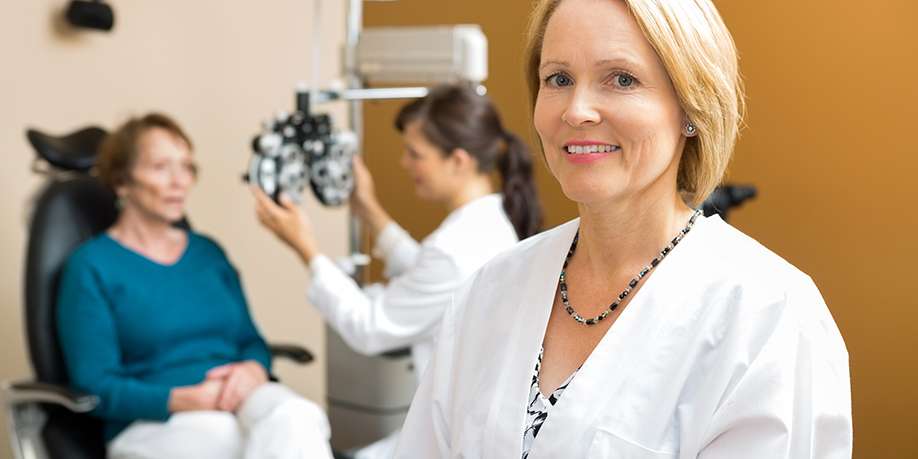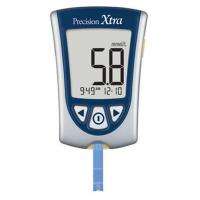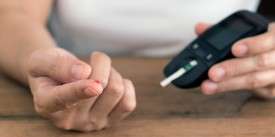
Diabetes Eye Care — Why People with Diabetes Need to See an Eye Doctor RegularlyDiabetes Eye Care — Why People with Diabetes Need to See an Eye Doctor Regularly
  © Tyler Olson | Dreamstime.com Diabetes affects the body's capacity to use or produce insulin effectively so it can't control blood sugar levels as it should. But this is just a quick summary of what diabetes is. In reality, this disease affects many parts of the body, which become damaged if there's a high amount of glucose in the blood for a long time. As such, diabetes can damage the kidneys, heart and blood vessels, including small blood vessels in the eye. If you have type I or type II diabetes, it's essential to have regular eye checks so your doctor can identify any issues before they become significant. Diabetes is the leading cause of blindness among people under 74 years of age, according to numbers provided by the Centers for Disease Control and Prevention. However, the good news is that 90% of vision loss caused by diabetes can be prevented with early detection. People who live with diabetes need to schedule eye exams every year even if they don't have any signs of vision problems.
What kind of eye exam do people with diabetes need? If you have diabetes, you need to have a full eye exam every year. This should be performed by an optometrist or ophthalmologist who knows about eye problems caused by diabetes, if possible. If you have type I diabetes, you should get an eye exam within five years of your initial diagnosis and then once every year. People with type II diabetes need to have an eye consultation immediately after discovering that they have diabetes. Approximately one in five people related to type II diabetes experienced some kind of eye problem when they are diagnosed. This means that it's important to book an eye exam as soon as possible after your diagnosis. If you have type I or type II diabetes and you are planning to get pregnant, it's crucial to have a complete eye exam and talk to your doctor about the possible complications that can happen to your eyes during your pregnancy. Pregnant women with diabetes need to have a complete eye exam in the first three months of pregnancy and then one year after the baby's birth.
What are the symptoms of diabetic retinopathy? Diabetic retinopathy is a condition that develops as a result of the blood vessels in your retina becoming damaged. If left untreated, diabetic retinopathy might lead to loss of vision. In the beginning, your vision may become blurry and then begin to disappear gradually. This is a condition that affects people with type I or type II diabetes. You are more likely to develop complications such as diabetic retinopathy the longer you live with diabetes, which is why it's essential to learn to identify the symptoms and schedule regular eye exams.
The symptoms of diabetic retinopathy include the following:
· Dark or empty areas in your field of vision · Floaters in your field of vision · Difficulty focusing · Blurry vision · Altered colored vision · Vision changes that fluctuate depending on the day · Partial or double vision loss
Diabetic retinopathy might affect one or both eyes simultaneously, but most of the time, it affects both eyes in equal measure. What are the risk factors for diabetic retinopathy? Anyone who has diabetes is at risk of developing diabetic retinopathy at one point in their life. However, there are some additional risks for developing the condition, including the following:
Pregnancy — pregnant women who also have diabetes may experience more issues with diabetic retinopathy, so it's important to check with your doctor to see if they suggest having additional exams during the pregnancy.
Poor diabetics management — if your diabetes is not kept under control, your risk for developing complications is higher. It's vital to have a strict glycemic control to prevent diabetic retinopathy. It's also essential to have your eyes checked as soon as possible after you receive your diabetes diagnosis.
Ethnicity: Hispanics and African-Americans have a greater risk of developing diabetic retinopathy, so if you are in one of these groups, you need to pay more attention to your eye health.
Smoking — if you have diabetes and also smoke, you are more likely to develop retinopathy.
Length of time with diabetes — the risk of developing complications, including diabetic retinopathy, goes up the longer you have diabetes.
There are multiple treatment options for diabetic retinopathy, and the exact treatment will depend on how severe the condition is. Sometimes, you might not need treatment even if you are diagnosed with retinopathy, but the condition is not causing you any symptoms. A healthy lifestyle and managing your diabetes is likely to reduce the likelihood of your retinopathy becoming worse. Focal laser treatment and scatter laser treatment are two common treatment options for those who have advanced diabetic retinopathy. If you're experiencing any issues with your eyes, talk to your doctor and schedule an eye exam, even if you've already had one in the same year. Your doctor will advise you on any lifestyle changes that you need to make to prevent or stop the progression of diabetic retinopathy.
| |||||||||||||||||||||||||




























